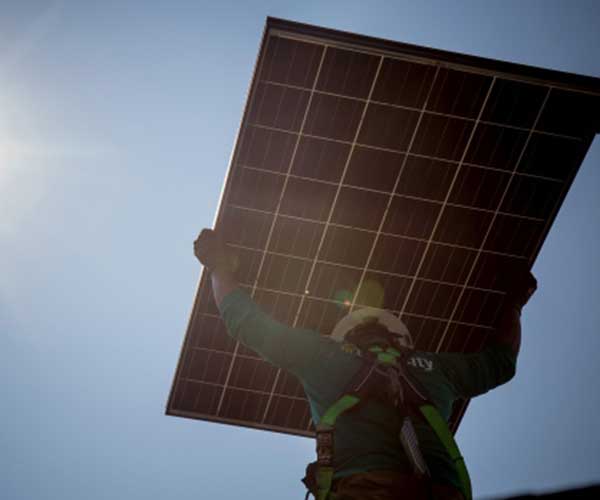Uncertainty fueled by the 201 case plagued module prices in 2017, resulting in price increases after years of steady decline.
Once tariffs were established, prices stabilized and began to drop again, albeit from a higher point than a year before.
However, on May 31, China abruptly ended its subsidy program for solar projects, forfeiting an estimated 20 gigawatts (GW) of demand and triggering an immediate oversupply in the global solar module market.
As the industry grasps the new market landscape, where is pricing now, and how will it change down the line?
Post-Tariff / Pre-Tariff
When China announced the abrupt end of its feed-in tariff in May, a whopping 20 GW of demand was estimated to have been lost, leaving module manufacturers searching for new projects to supply.
With a massive oversupply, developers have seen prices drop considerably for overseas modules, moving quickly towards pre-tariff levels in the mid-30’s cents-per-watt for imported modules, which we expect to see by the end of the year.
For clarification, these new prices include the cost of tariffs, emphasizing how low the selling price is currently from the manufacturers perspective, who do not see that full price, while they are sandwiched between two unfavorable policy decisions.
The price drop is also consistent across technologies, making imported high-efficiency modules such as mono-PERC and bifacial all the more attractive from a price standpoint.
Though prices look like they are “resetting” to early 2017 when prices were closing in on 30 cents-per-watt, technologies like mono-PERC, which generates additional power by reflecting light into the back of the cell, continue through a steep learning curve, and we expect the supply of this module type to be greater, and their price premium relative to standard modules to decrease.
Effects on the US Market
Although 20 fewer gigawatts of clean, solar energy is a loss for the world, the U.S. solar market is already benefitting from the recent drop in prices.
Utility-scale solar developers, who were hardest hit by the 201 tariffs, are now seeing projects pencil again.
For commercial developers, bids that were made months ago can now potentially be restructured with better economics for both the developer and the customer. Projects that may have been put on hold due to the tariffs may now see light sooner than expected.
Where Do Prices Go from Here?
Regardless of the political and economic factors that may push pass up or down like we’ve seen recently, Sol expects modules will continue to decrease in price and increase in efficiency.
Solar module production has tended to follow a quasi-Moore’s law, where even though the short-term prices may be somewhat lumpy, prices have followed a steady march downward over time, even while their efficiency steadily increases as well.
Learning rates – the rate at which manufactures are maturing their process and scaling – published by the International Technology Roadmap for Photovoltaics (ITPRV) for the past 10 years indicate that module prices have tended to drop by almost 40 percent measured in dollars-per-watt ($/W) for every doubling of global cumulative capacity.
Based on this historical rate and projected global installations over the coming years, we expect underlying global module prices to continue decreasing at a rate of around 10 percent per year.
On top of this, the U.S. tariffs will step down 5 percent per year until they end completely in 2022, adding to the price decline for the U.S. market.
Increases in module efficiency contribute to this $/W pricing decline, and based on our industry research, Sol Systems expects the nameplate capacity for each individual module type (such as mono-PERC) to increase between 5-10 watts per year.
Especially for the commercial market, Sol also expects there to be a significant increase in the quantity of even higher efficiency modules in the coming years due to the recent influx of half-cut cells in modules.
This increase in module efficiency will also contribute to $/W balance-of-system savings, especially in reduced racking costs and labor savings.
–
Hold on tight. The solar coaster is unpredictable, but always making gradual progress towards its destined place in the grid of the future.













Comments